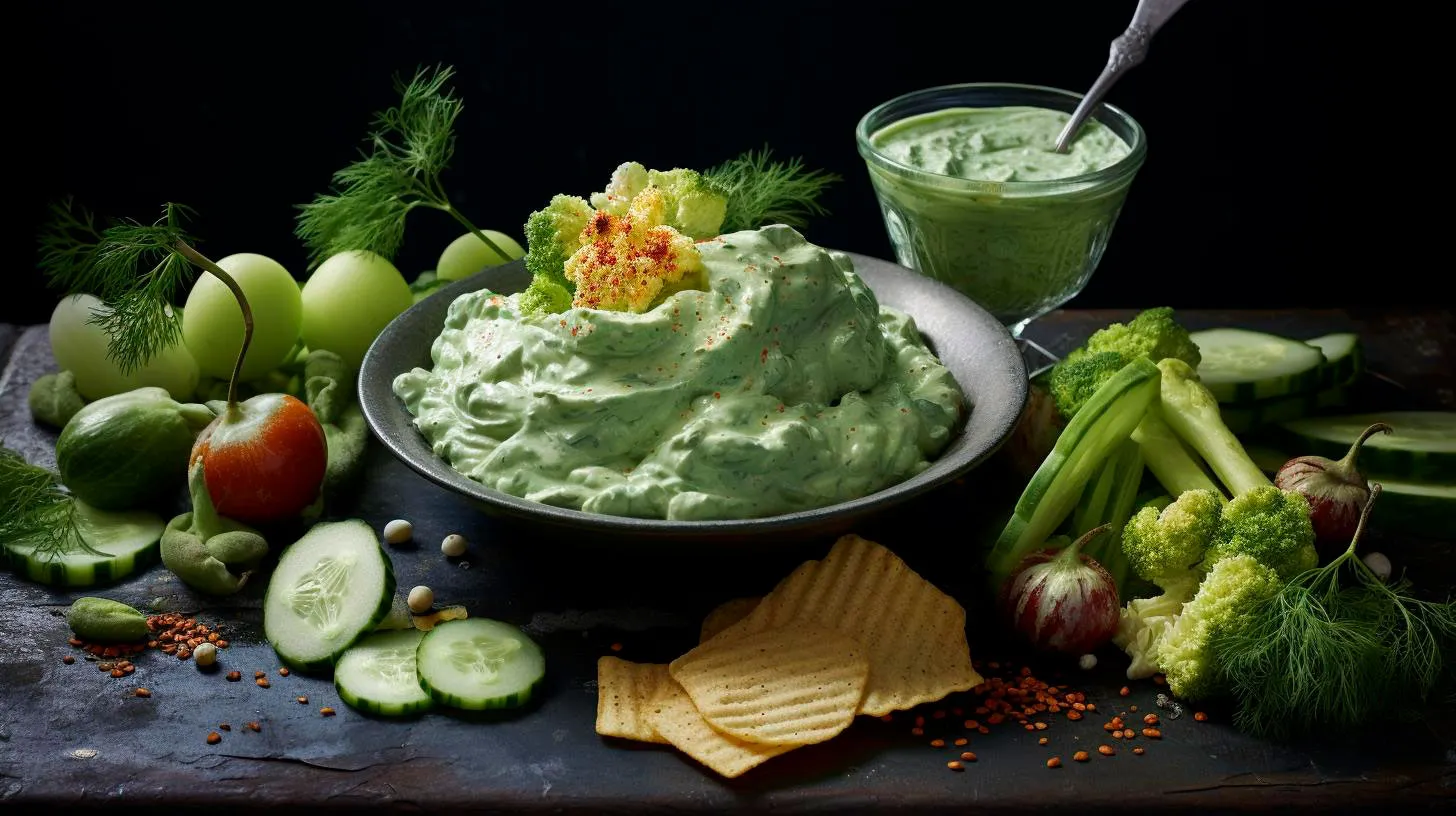Eco-Conscious Sushi Redefining Sustainable Dining
And one cuisine that is leading the way in this regard is sushi. Known for its fresh and delicate flavors, sushi has been redefining sustainable dining with its eco-friendly practices and commitment to preserving our oceans.
The Environmental Impact of Traditional Sushi
Traditional sushi, while delicious, often comes at a cost to the environment. The overfishing of certain species, such as bluefin tuna, has led to a decline in their populations and disruption of marine ecosystems. Additionally, the carbon footprint of sushi is significant, with the transportation of fish and other ingredients from distant locations contributing to greenhouse gas emissions.
Recognizing these environmental concerns, a new wave of sushi restaurants has emerged, revolutionizing the industry with their commitment to sustainable practices. These pioneering establishments are changing the way we think about sushi and showing us that it’s possible to indulge in this culinary delight while still being environmentally responsible.
The Rise of Eco-Conscious Sushi Restaurants
So, what sets these eco-conscious sushi restaurants apart? Let’s dive into some of the key features and advantages that make them stand out:
1. Locally-Sourced Ingredients:
- Eco-conscious sushi restaurants prioritize sourcing their ingredients locally, reducing the carbon footprint associated with long-distance transportation. By working closely with local fishermen and farmers, these establishments support sustainable fishing practices and small-scale agriculture.
- By choosing to use seasonal and locally-available ingredients, these restaurants ensure that the fish, vegetables, and other components of their sushi are fresh, flavorful, and in harmony with the natural environment.
2. Ocean-Friendly Seafood Choices:
- Eco-conscious sushi restaurants place a strong emphasis on offering sustainable seafood choices. They carefully select their fish based on sustainable seafood guides and avoid species that are overfished or caught using destructive methods.
- Some of these restaurants even partner with organizations like the Monterey Bay Aquarium’s Seafood Watch to ensure they are making responsible choices when it comes to seafood sourcing.
3. Waste Reduction and Recycling:
- Reducing waste is a key focus for eco-conscious sushi establishments. They prioritize using eco-friendly packaging, such as biodegradable or compostable containers and utensils.
- These restaurants also have well-established recycling programs in place, ensuring that plastic, glass, and other waste products are disposed of properly.
4. Energy-Efficient Practices:
- Eco-conscious sushi restaurants go above and beyond to minimize their energy consumption. From using energy-efficient kitchen appliances to implementing LED lighting and smart thermostats, these establishments are committed to reducing their carbon footprint.
- Some even utilize solar power and invest in renewable energy sources, further reducing their reliance on fossil fuels.
The Key Takeaways
Eco-conscious sushi restaurants are leading the way in redefining sustainable dining. By prioritizing locally-sourced ingredients, offering ocean-friendly seafood choices, implementing waste reduction initiatives, and adopting energy-efficient practices, they are setting a new standard for environmentally responsible dining. Here are the key takeaways from this article:
- Eco-conscious sushi restaurants are committed to sourcing their ingredients locally, supporting sustainable fishing and agriculture.
- These establishments choose seafood based on sustainable seafood guides, avoiding overfished species and destructive fishing practices.
- Reducing waste and implementing recycling programs are crucial aspects of eco-conscious sushi restaurants.
- Energy-efficient practices, such as using energy-efficient appliances and adopting renewable energy sources, are prioritized by these establishments.
As our awareness of the environmental impact of our choices continues to grow, it’s heartening to see the sushi industry stepping up to the plate. By making sustainable practices a priority, eco-conscious sushi restaurants are not only redefining sustainable dining but also inspiring other cuisines to follow suit. So, the next time you have a craving for sushi, consider seeking out one of these eco-friendly establishments and enjoy your meal with a clear conscience.
Sustainable Seafood Satisfying the Palates of Eco-Conscious Diners
In response to this trend, the culinary industry has embraced the concept of sustainable seafood, offering a diverse range of options that not only satisfy the palates of diners but also contribute to the preservation of our marine ecosystems.
The Importance of Sustainable Seafood
Before diving into the benefits and available options, it’s crucial to understand the significance of sustainable seafood. Overfishing and destructive fishing practices pose a severe threat to our oceans, depleting fish stocks and disrupting fragile marine habitats. By opting for sustainable seafood, we can ensure the responsible management of fisheries, protect threatened species, and maintain a healthy balance within marine ecosystems.
Benefits of Sustainable Seafood
- 1. Environmental Preservation: Sustainable fishing practices reduce the strain on ecosystems and help maintain biodiversity.
- 2. Supporting Local Communities: Sustainable seafood promotes local fishing communities, creating economic opportunities and preserving cultural traditions.
- 3. Healthier Choices: Sustainable seafood is often caught using more selective methods, resulting in higher-quality and healthier fish.
- 4. Improved Fishing Practices: The demand for sustainable seafood encourages the adoption of innovative fishing techniques that minimize bycatch and habitat damage.
- 5. Long-Term Viability: By choosing sustainable seafood, we contribute to the long-term viability of fish stocks, ensuring their availability for future generations.
Exploring Sustainable Seafood Options
There is a wide range of sustainable seafood choices available to satisfy the palate of even the most discerning diner. Here are some popular options:
1. MSC-Certified Products
The Marine Stewardship Council (MSC) certification is a well-recognized standard for sustainable seafood. The MSC label ensures that the fish has been caught using methods that protect fish stocks and preserve marine habitats. Look for the MSC logo when purchasing seafood products to make an eco-conscious choice.
2. Aquaculture and Responsible Farming
Aquaculture, or fish farming, provides a viable solution to the challenges of overfishing. Sustainable aquaculture practices can help meet the growing demand for seafood while reducing pressure on wild fish populations. Look for responsibly farmed alternatives such as organically farmed fish or those produced in closed-containment systems.
3. Local and Seasonal Options
Choosing locally caught seafood that is in season is another way to support sustainability. By doing so, you reduce the carbon footprint associated with transportation and support local fishermen. Additionally, opting for seasonal seafood ensures the fish are caught during their peak abundance, promoting responsible fishing practices.
4. Diversification of Choices
Expanding the variety of seafood consumed is a valuable way to contribute to sustainable practices. By choosing lesser-known species or invasive species that threaten local habitats, consumers can actively participate in biodiversity conservation while enjoying delicious, unique flavors.
The Future of Sustainable Seafood
The demand for sustainable seafood is growing rapidly, as diners become more aware of the environmental impact of their food choices. To stay ahead of this trend, restaurants and culinary establishments must adapt to meet the increasing demand for eco-friendly dining options.
Key Takeaways:
- Choose sustainable seafood to contribute to the preservation of marine ecosystems and support responsible fishing practices.
- Select MSC-certified products and responsibly farmed alternatives.
- Opt for locally caught seafood that is in season to minimize the ecological footprint.
- Consider diversifying seafood choices to support biodiversity conservation.
By embracing sustainable seafood practices, the culinary industry can play a pivotal role in safeguarding our oceans for future generations. Whether you’re a consumer or a culinary professional, let’s join together in making sustainable seafood a delightful and responsible choice!
Sushi Innovations Revolutionizing Sustainable Culinary Experiences
Fortunately, sushi innovations are emerging that not only revolutionize the way we experience sushi but also prioritize sustainable practices.
The Rise of Sustainable Sushi
Sustainability has become a buzzword across various industries, and the world of sushi is no exception. With concerns about overfishing, species depletion, and the ecological impact of fishing practices, the sushi industry has recognized the need for change. Several sushi innovations have emerged that aim to address these concerns while still providing unique and delightful culinary experiences.
1. Plant-based Alternatives
One of the most significant advancements in sushi innovation is the introduction of plant-based alternatives to traditional fish-based sushi. By using ingredients like marinated carrots, avocado, and tofu, sushi chefs have managed to recreate the same texture and flavors that sushi lovers crave. This not only reduces the pressure on overfished species but also opens up a whole new world of flavors and possibilities for sushi enthusiasts.
- Plant-based sushi options cater to vegetarians and vegans, expanding the sushi experience to a wider audience.
- These alternatives offer a healthier alternative for those looking to reduce their intake of animal products.
- Reducing the demand for fish in sushi helps protect vulnerable marine ecosystems and promote sustainable fishing practices.
2. Locally Sourced Ingredients
Another key aspect of sustainable sushi is the emphasis on locally sourced ingredients. By sourcing fish and other ingredients from local and sustainable fisheries, sushi establishments can reduce their carbon footprint and support their local communities. This also ensures that the fish used in sushi are caught using environmentally friendly techniques, reducing the overall impact on ocean ecosystems.
- Locally sourced sushi supports the local economy and reduces transportation emissions associated with long-distance fish transportation.
- Fish sourced from sustainable fisheries ensures the longevity of fish populations and protects endangered species.
- By focusing on local ingredients, sushi chefs can keep their creations fresh and seasonal, providing a unique experience for diners.
3. Technology Integration
Technology has played a crucial role in revolutionizing various industries, and sushi is no different. Sushi innovations have incorporated technology into the sushi-making process to streamline operations and reduce waste. For example, sushi robots are now used in some establishments to ensure consistent portion sizes and minimize food waste.
- Using sushi robots increases efficiency in the kitchen, allowing chefs to focus on creativity and flavor combinations.
- Consistent portion sizes through technology help reduce food waste, contributing to a more sustainable sushi experience.
- Integrating technology in sushi-making offers a unique and captivating experience for diners, enhancing their overall enjoyment.
Key Takeaways
Sushi innovations are transforming the way we experience this traditional Japanese dish while prioritizing sustainability. By embracing plant-based alternatives, sourcing ingredients locally, and integrating technology, sushi establishments are revolutionizing sustainable culinary experiences.
Key takeaways from these sushi innovations include:
- Expanded options for vegetarians and vegans, making sushi accessible to a wider audience.
- Reduced pressure on overfished species and protection of marine ecosystems.
- Supporting local communities and reducing the carbon footprint through locally sourced ingredients.
- Efficiency and reduced food waste through the integration of technology in sushi-making.
As sushi continues to evolve, these sustainable innovations pave the way for a more responsible and enjoyable dining experience. So, the next time you indulge in sushi, remember the positive impact these innovations have on both your taste buds and the planet.
The Green Revolution Sushi Journey Towards Sustainable Gastronomy
The sushi industry is also undergoing a green revolution, with an increasing number of sushi restaurants and chefs embracing sustainable practices. Let’s take a dive into the world of sustainable sushi and explore the steps being taken to create a greener and more eco-friendly gastronomic experience.
Understanding the Environmental Impact of Traditional Sushi
Traditional sushi is made using ingredients that may contribute to environmental degradation. Here are some key points to consider:
- Overfishing: The demand for popular sushi fish species has led to overfishing, depleting ocean ecosystems and endangering marine biodiversity.
- Carbon Footprint: Sushi restaurants often rely on long-distance transportation to source their fish and ingredients, contributing to carbon emissions.
- Plastic Waste: Single-use plastic packaging and disposable chopsticks create a significant amount of waste that ends up in landfills and oceans.
Sustainable Sourcing and Fishing Techniques
The green revolution in sushi is driven by sushi chefs, restaurants, and suppliers who are committed to adopting sustainable sourcing and fishing practices. Here’s what they are doing:
- Aquaculture: Sushi makers are increasingly turning to responsibly farmed fish as an alternative to wild-caught varieties. This helps relieve the pressure on wild fish populations.
- Local Sourcing: Restaurants are collaborating with local fishermen and farmers to source fish and produce sustainably. By reducing transportation distances, they also minimize their carbon footprint.
- Species Selection: Chefs are incorporating lesser-known, abundant, and fast-growing fish species into their menus, reducing the demand for endangered fish.
- Responsible Fishing Techniques: Some sushi suppliers use sustainable fishing methods like hook and line, which minimize by-catch and prevent damage to marine habitats.
Alternative Ingredients and Green Innovations
In addition to sustainable sourcing, the sushi industry is exploring alternative ingredients and innovative techniques to create eco-friendly sushi options:
- Plant-Based Sushi: Veggie sushi rolls and nigiri made with ingredients like avocado, cucumber, and tofu offer a viable vegetarian and vegan option, reducing reliance on seafood.
- Invasive Species: Sushi chefs are experimenting with invasive fish species that threaten local ecosystems. By putting them on the menu, they help control their populations naturally.
- Kelp Farming: Kelp (seaweed) farming is gaining popularity as an environmentally friendly practice. Kelp absorbs excess nutrients, filters water, and provides a sustainable ingredient for sushi rolls.
- Edible Packaging: Some innovative sushi restaurants are exploring the use of edible packaging made from seaweed or rice paper, reducing plastic waste.
Key Takeaways for Sushi Lovers
Here are some key takeaways to keep in mind when it comes to sustainable sushi:
- Choose sushi restaurants that prioritize sustainable sourcing and fishing practices.
- Explore alternative sushi options like plant-based rolls and dishes made with invasive species.
- Support local and organic sushi suppliers, as they often have a smaller carbon footprint.
- Be mindful of waste by avoiding single-use plastics and opting for restaurants that use eco-friendly packaging.
The green revolution in the sushi industry is an inspiring journey towards sustainable gastronomy. By making conscious choices and supporting sushi establishments that prioritize sustainability, we can enjoy our favorite delicacy while protecting the planet.



